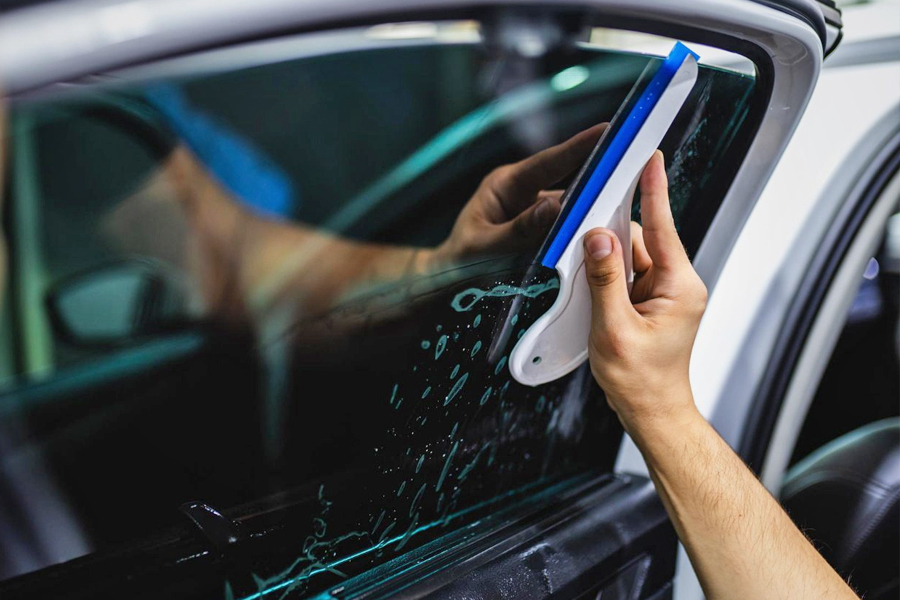Automobile Window Tinting: Find the most effective Deals and Top Quality Services Close-by
Automobile Window Tinting: Find the most effective Deals and Top Quality Services Close-by
Blog Article
Home Window Tinting Regulations and Guidelines: What You Required to Know Prior To Tinting Your Automobile
Before continuing with window tinting for your car, it is essential to acquaint on your own with the varied laws and guidelines that control this method throughout various states. These regulations determine the permitted levels of color darkness, typically measured by visible light transmission (VLT) portions, and consist of particular terms for front windscreens aimed at making sure roadway security.
Overview of Window Tinting Regulations
Window tinting regulations are regularly subject to variant across different jurisdictions, reflecting neighborhood guidelines and safety factors to consider. These legislations determine the acceptable degrees of tint darkness and reflectiveness on vehicle home windows, guaranteeing that drivers maintain adequate presence while also protecting against harmful UV rays and warmth.
A lot of regulations classify home window tinting based on the Visible Light Transmission (VLT) percentage, which suggests the amount of light that can pass with the window. Typically, reduced VLT percents symbolize darker colors. Regulations commonly distinguish in between the front, side, and back windows, with more stringent constraints applied to the front windscreen to improve safety and security for both the chauffeur and various other road individuals.
In addition, some territories impose restrictions on the reflectivity of the tint, avoiding extreme glow that can harm presence. Exemptions to these regulations might exist for people with particular clinical problems requiring additional sun protection. Conformity with window tinting regulations is critical, as infractions can cause penalties, required removal of the color, and potential increases in insurance coverage costs. As a result, it is vital for automobile proprietors to acquaint themselves with neighborhood laws before waging home window tinting installations.
State-by-State Tint Regulations
Understanding the particular home window tinting guidelines in each state is crucial for lorry proprietors looking for to abide with the legislation. Each state in the U.S. has actually developed its very own collection of guidelines governing home window tinting, which can differ dramatically. These laws frequently dictate the permitted levels of color darkness, the sorts of windows that can be tinted, and any kind of clinical exceptions that might use.
As an example, states like The golden state have stringent constraints on tint darkness for front home windows, while others, such as New Mexico, may allow darker tints. In addition, specific states mandate details visibility portions for various windows, including the windscreen, front side home windows, and rear windows. It is critical for cars and truck owners to acquaint themselves with their state's regulations to avoid prospective fines or penalties.
Additionally, some states might need an accreditation sticker to be positioned on tinted home windows, indicating compliance with state laws. Failing to adhere to these guidelines not just takes the chance of legal repercussions but can additionally affect safety and security and presence while driving. Vehicle proprietors ought to conduct detailed research or speak with neighborhood authorities to make certain complete understanding and conformity with state-by-state color guidelines.
Allowed Color Types and levels
Many automobile owners might be shocked to find out that permitted tint levels and kinds differ commonly across different states. Each state has actually developed its very own laws pertaining to the allowable darkness and reflectivity of window tint, frequently measured by Visible Light Transmission (VLT) percentages. VLT describes the amount of light that can go through the index tinted home windows; therefore, a lower percent suggests a darker tint.

Additionally, the kinds of tint materials enabled can vary, with some states banning mirror-like or metallic finishes. It is vital for car owners to acquaint themselves with their state's details legislations to ensure conformity. Non-compliance can result in penalties, obligatory removal of the tint, or various other legal repercussions, making it necessary to understand these guidelines prior to waging installation.
Medical Exemptions for Tinting
While not all states supply allowances for medical exceptions regarding window tinting, those that do recognize the requirement for certain individuals to improve presence and convenience as a result of medical conditions. Various clinical conditions, such as lupus, skin cancer cells, and certain eye conditions, can render people specifically delicate to sunlight. Subsequently, these individuals might require darker colors to shield themselves from harmful UV rays and glare.

It is very important to note that despite a clinical exemption, there might still be limitations on the degree of tint enabled. Conformity with state laws makes certain that people are both secured and within legal limitations. Those thinking about medical exemptions need to contact their local Department of Motor Vehicles or comparable authority to recognize the demands and procedures essential to look for an exception efficiently.
Fines for Non-Compliance
Stopping working to abide by window tinting laws can cause substantial charges, which differ by state. Law enforcement firms are equipped to issue citations for lorries that do not comply with the specified tinting regulations. These fines generally include penalties, which can vary from modest amounts to a number of hundred dollars, relying on the extent of the infraction and the state concerned.
In some jurisdictions, repeated offenses may blog result in intensifying penalties or additional penalties, such as mandatory court appearances. Non-compliance may require the removal of prohibited tinting, often at the owner's expense. In extreme situations, regular wrongdoers might encounter suspension of their lorry enrollment till conformity is attained.
In addition, insurance policy implications might occur from receiving multiple citations for home window tint offenses. Insurance companies might watch such infractions as click to read more an indication of riskier behavior, potentially causing boosted premiums or trouble in coverage.
To avoid these charges, it is critical for car owners to familiarize themselves with their regional window tinting legislations and guarantee that their vehicle complies (Window Tinting). This aggressive method not only avoids lawful ramifications however also advertises road security
Final Thought

Most laws classify window tinting based on the Visible Light Transmission (VLT) percent, which suggests the amount of light that can pass with the home window. Compliance with window tinting laws is crucial, as infractions can result in penalties, compulsory removal of the color, and potential boosts in insurance coverage premiums.Comprehending the specific window tinting policies in each state is crucial for automobile owners seeking to conform with the legislation. These laws commonly determine the allowed levels of tint darkness, the types of home windows that can be tinted, and any kind of medical exceptions that might use.
For instance, states like The golden state have strict constraints on color darkness for front home windows, while others, such as New Mexico, may enable darker colors.
Report this page